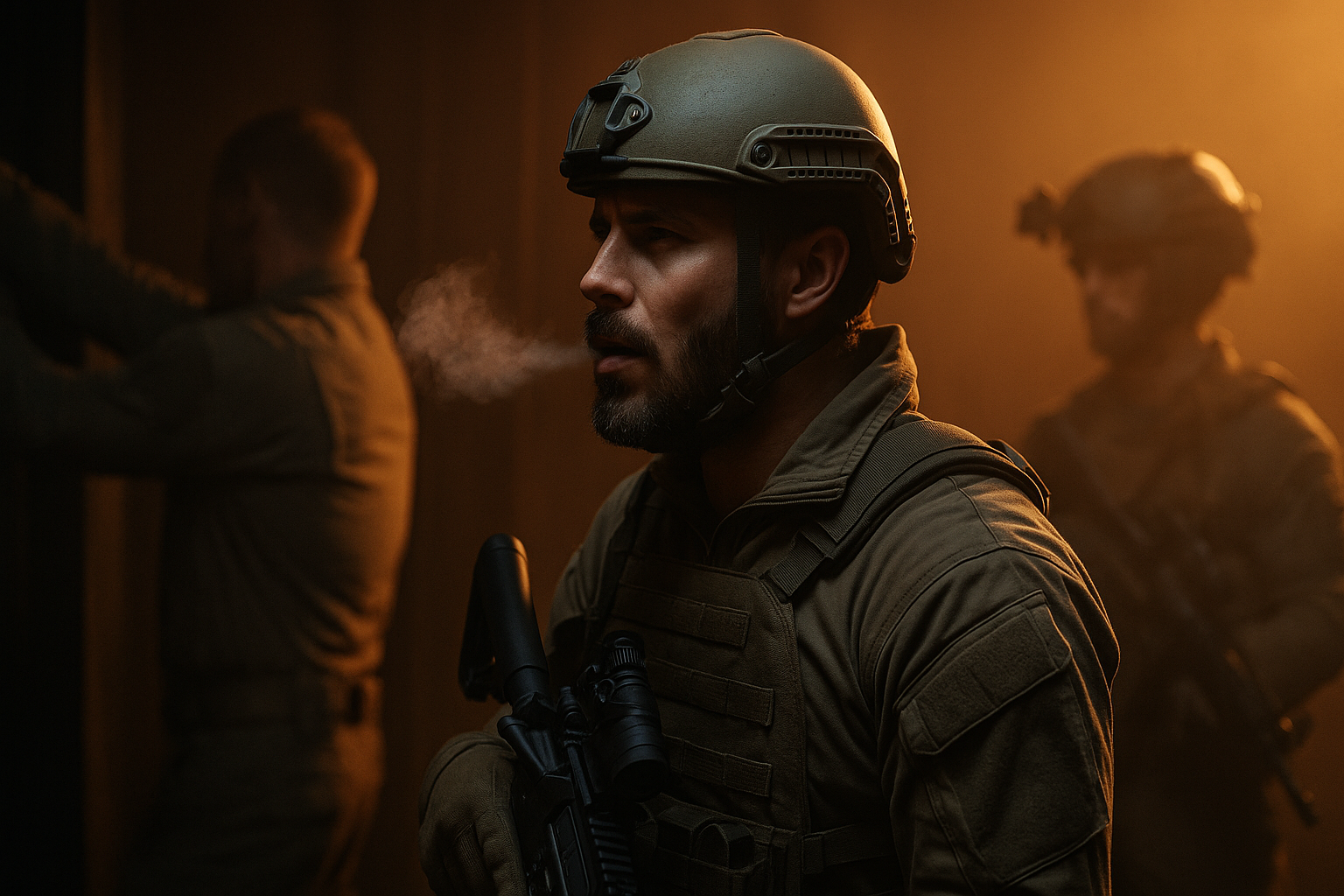Bottom line up front: Controlled, deliberate breathing is one of the fastest, most reliable ways to steady cognition and motor skills when adrenaline spikes. It’s simple enough to deploy under fire and robust enough to build into SOPs for entries, pursuits, casualty care, and post-incident recovery. Research from police, military, and sport-shooting studies shows tactical breathing can improve memory under stress, increase first-shot accuracy, and boost heart-rate variability (HRV)—a marker of autonomic control.
The Concept (Plain English)
When things go sideways, the sympathetic nervous system surges (fight/flight), pushing heart rate, narrowing attention, and compromising fine motor control. Tactical breathing taps the parasympathetic “brake” via the vagus nerve, helping regulate arousal and restore decision-making and dexterity.
“Tactical breathing is a leash on the puppy.” — Lt. Col. Dave Grossman, On Combat
What the Research Says
-
Police cadets under OC spray: Cadets who used controlled breathing during the event scored higher in memory recall.
-
Soldiers in stressful simulations: Tactical breathing training improved stress-management skills versus controls.
-
Student soldiers on a shooting simulator: Tactical breathing increased first-shot accuracy significantly.
-
Police pairs in critical-incident sims: Teams cued to breathe tactically performed better under pressure.
-
Slow-paced breathing (~6 breaths/min): Increased HRV and improved emotional control in healthy adults.
-
Long-term training: 12 weeks of tactical breathing and HRV practice improved shooting scores and lowered stress.
-
Technique comparison: Box breathing and long-exhale methods both reduce arousal—what matters most is consistency.
Heart-Rate Zones: Model vs. Reality
Popular tactical programs teach that fine motor skills drop above 115 bpm, and overall performance collapses past 175 bpm. This model is useful for training, but real-world performance depends heavily on repetition and familiarity. Don’t take the numbers as gospel—take them as guidance.
Field-Ready Protocols
1) Box Breathing (Fast & Simple)
-
Inhale through nose: 4 seconds
-
Hold: 4 seconds
-
Exhale through mouth: 4 seconds
-
Hold: 4 seconds
Do 3–6 cycles. Ideal for pre-entry, precision shots, radio calls, or post-incident recovery.
2) Resonance Breathing (Training & Recovery)
-
Breathe at ~6 per minute (e.g., 4s in / 6s out), preferably through the nose.
-
Run 5–10 minutes in training or 1–2 minutes between evolutions.
-
Builds HRV and long-term autonomic control.
3) Prolonged-Exhale Reset (On the Move)
-
Inhale 3–4s, exhale 6–8s (no holds).
-
Works during pursuits, vehicle movement, or while repositioning.
-
Simple, effective, and less mental load than counting boxes.
Tactical Applications
-
Before precision tasks: Shooting, breaching, tourniquet applications.
-
During chaos: Between corners, before a radio transmission, while indexing a movement.
-
After events: In debriefs or reports—breathing steadies recall and reduces anxiety tied to memory.
Training Drills
-
90-Second Gate: Cycle box breathing, then fire 3-shot groups—track accuracy.
-
Breathe-Call-Act: One breath cycle before making a radio call—assess clarity and calmness.
-
Pursuit to Contact: Sprint to spike HR, then one breath cycle before engaging in a task.
-
SPB Blocks: Twice-weekly 10-minute resonance breathing to build baseline control.
-
Post-Incident Protocol: 3–6 cycles of box breathing before giving statements or debriefs.
Safety Notes
-
Don’t over-breathe. If light-headed, shorten holds or skip them.
-
Long exhales are as effective as equal box breathing—choose what’s most natural.
-
Heart-rate “zones” are guides, not absolutes. Well-trained operators can maintain function at higher rates.
-
Medical considerations: If you have asthma, COPD, panic disorder, or pregnancy—stick with gentle versions (no long holds).
Quick Quotes
-
“Tactical breathing is a leash on the puppy.” — Dave Grossman
-
“Cadets using controlled breathing scored significantly higher in memory recall.” — Police Academy study
Cheat Card
-
Box: 4-4-4-4 × 3–6 cycles (pre-precision / post-incident)
-
Exhale-heavy: In 3–4s, out 6–8s (pursuits, radio, movement)
-
Resonance: ~6/min for 5–10 min (training / between evolutions)
Wrap-Up
Tactical breathing isn’t magic, but it’s one of the most practical tools operators can carry. It’s free, portable, and works instantly—even when your hands are shaking. Train it into muscle memory on the range, in the gym, and in sims, so it’s there when you need it most: before the shot, before the call, before your brain outruns your body.



Share:
Tactical Source LLC – One Source. Total Solutions. No Nonsense.
Dealing with Pressure and Stress in Policing: Prevention and Support
1 comment
Good info here. Speaking as a retired Army man who later wore a Deputy’s badge, I can tell you – breath control is the quiet skill that saves you when the noise starts. In combat, I watched rookies lose their aim because panic owned their lungs. On the street, I’ve seen deputies walk into domestic calls shaking until they caught one deep breath. My two cents? Practice breathing when it doesn’t matter, so when it does, you don’t even think about it – you just do it. That’s survival